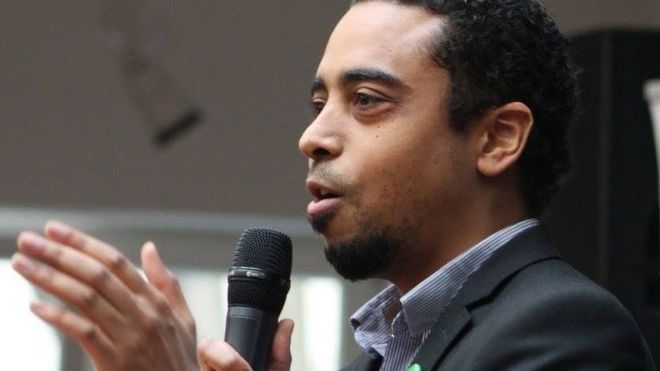Hungary’s first black MP aims to ‘destroy prejudice’Posted in Articles, Europe, Media Archive, Politics/Public Policy on 2018-06-11 15:18Z by Steven |
Hungary’s first black MP aims to ‘destroy prejudice’
BBC News
2018-06-11
 Orsolya Kovacs Olivio Kocsis-Cake: Fidesz always finds an enemy who must be hated |
Hungary has a reputation for anti-immigration politics, but a young black liberal MP wants to revamp the country’s image.
Olivio Kocsis-Cake, of the opposition Parbeszed (Dialogue) party, is being sworn in as an MP on Monday, taking a seat vacated by a colleague who is stepping down.
Mr Kocsis-Cake (pronounced “kochish-tsocker”) has become a talking point in Hungary because of the strong anti-migrant rhetoric – particularly against non-whites – ratcheted up by members of the governing Fidesz party, its loyal national media and far-right groups like Jobbik.
“In the 1990s I was physically in danger a number of times when confronted by skinheads on the street. But now this is very unusual. Mostly I just get suspicious looks,” Mr Kocsis-Cake told independent news website Index.hu.
Parbeszed won just five seats in the 2018 election, in which the right-wing Fidesz of Prime Minister Viktor Orban secured a super-majority of 133 seats and the ultra-nationalist Jobbik came second with 26 seats…
…Two different generations
Olivio Kocsis-Cake was born in 1980. His mother is Hungarian and his father, from Guinea-Bissau, came to Hungary via Senegal in 1976, aged 18.
Like many students invited to communist Eastern Europe from developing countries, Marcelo Cake-Baly studied and graduated at the Karl Marx Economics University. He settled and found work as a Budapest tram-driver and was even a one-time film actor…
Read the entire article here.


